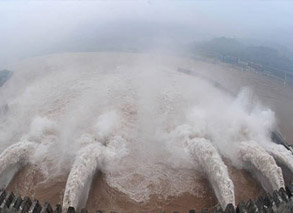A new prescription
2009-09-14 17:21 BJTTogether with my business partner, Elyse Silverberg, we founded Chindex in 1981. Using our life savings (which at the tender ages of 23 and 24 were pretty skimpy), we bought two typewriters, rented a hotel room in Beijing and a room in New York City, and began what sometimes felt more like a detective agency than a business.
As we worked together with the Chinese foreign trade agencies (we were not allowed to have direct contact with our customers at the beginning), we had to decipher the purchase requisitions of the end users they represented, who were doctors in hospitals all over the country.
These doctors picked their shopping lists from the "methods and materials" sections of research papers in journals, which were sometimes very old. The requisitions were handwritten with laboriously, sometimes inaccurately, copied English letters.
Sometimes what they wanted was already obsolete, and so we had to figure out what modern product would best fill their needs. In the very early days, almost all of our business was done at the bi-annual Canton Fair, an event where business was done only with foreign trade officials. Our role was to help them find the products on the official requisitions, and then arrange for their importation.
Unfortunately we didn't get immediate cooperation from the US manufacturers, as they were often wary of getting involved in business with "Red" China, suspicious of their prospective customers' ability to pay with anything but tea, and had reasonable enough concerns about how they would be able to support the products they sold. It was our job to convince these US companies that we could pay them 100 percent upfront via letters of credit, and that we were building a company in China that could do the after-sales support.
Soon we hired a few engineers who we sent for training with the US manufacturers. Several far-sighted American companies became our business partners as we began to market and sell their products all over China. This became possible in the early 1980s as the government became slightly more open to direct (though still formal, government-controlled) contact between foreign suppliers and their customers.

 Mail
Mail Share
Share Print
Print


 Video
Video









 2009 China Central Television. All Rights Reserved
2009 China Central Television. All Rights Reserved